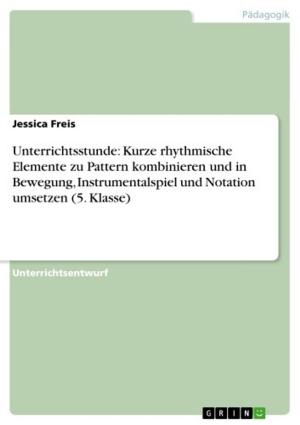An interpretation of ' Hawk Roosting' (by Ted Hughes)
Fiction & Literature, Literary Theory & Criticism, British| Author: | Hanno Frey | ISBN: | 9783638213554 |
| Publisher: | GRIN Verlag | Publication: | August 27, 2003 |
| Imprint: | GRIN Verlag | Language: | English |
| Author: | Hanno Frey |
| ISBN: | 9783638213554 |
| Publisher: | GRIN Verlag |
| Publication: | August 27, 2003 |
| Imprint: | GRIN Verlag |
| Language: | English |
Essay from the year 2000 in the subject English Language and Literature Studies - Literature, grade: 1,0 (A), University of Hamburg (FB Anglistics), course: Seminar 1b: The Language of Poetry and Advertising, language: English, abstract: Writing a poem is a highly complex process which at the same time enables and forces the writer to express his ideas in (mostly) only a few words or sentences. It is thus very important to use a dense language which very carefully picks from a potentially broad semantic range. The aim of this selecting process must be not only to transmit isolated meanings of words but also to create an atmosphere which somehow enables the reader to reconstruct the feelings the author had when he1 wrote his poem. In order to do so there are different possibilities: It is possible to make use of the connotations words possess and which add additional meaning to their denotations. Moreover it is also a well used means to embed different rhetoric devises in a text in order to intensify its density and to increase its emotionality. This can be done on the basis of two different levels: Firstly there are rhetoric figures on a syntactic level. Examples of that kind relate to the position of words (inversion, parallelism...), the phenomenon of repetition (anaphors, reduplicatio anadiplosis...) or the quantity of expressions (amplifications, antithesis...). Secondly there are the so- called tropes which represent rhetoric devises on a semantic level. The word 'tropes' originates in Greek and designs an 'unusual expression'. Tropes do therefore occur when one expression is replaced by another which derives from a different (semantic) context. Examples of the second kind are metaphors, allegories and irony. In the following interpretation of the poem 'Hawk Roosting' by Ted Hughes I am going to refer to some of the rhetoric devises which I have just presented. In doing so I am going to prove that this poem is a perfect example of a language which is at the same time emotive and descriptive and therefore combines two most interesting and fascinating aspects of poetry. As I am going to show the author does not use many different stylistic devices but rather concentrates on one single one. Nevertheless, this one is sufficiently enough, well chosen and serves its purpose. 1 For reasons of space I am only going to use masculine forms in this essay.
Essay from the year 2000 in the subject English Language and Literature Studies - Literature, grade: 1,0 (A), University of Hamburg (FB Anglistics), course: Seminar 1b: The Language of Poetry and Advertising, language: English, abstract: Writing a poem is a highly complex process which at the same time enables and forces the writer to express his ideas in (mostly) only a few words or sentences. It is thus very important to use a dense language which very carefully picks from a potentially broad semantic range. The aim of this selecting process must be not only to transmit isolated meanings of words but also to create an atmosphere which somehow enables the reader to reconstruct the feelings the author had when he1 wrote his poem. In order to do so there are different possibilities: It is possible to make use of the connotations words possess and which add additional meaning to their denotations. Moreover it is also a well used means to embed different rhetoric devises in a text in order to intensify its density and to increase its emotionality. This can be done on the basis of two different levels: Firstly there are rhetoric figures on a syntactic level. Examples of that kind relate to the position of words (inversion, parallelism...), the phenomenon of repetition (anaphors, reduplicatio anadiplosis...) or the quantity of expressions (amplifications, antithesis...). Secondly there are the so- called tropes which represent rhetoric devises on a semantic level. The word 'tropes' originates in Greek and designs an 'unusual expression'. Tropes do therefore occur when one expression is replaced by another which derives from a different (semantic) context. Examples of the second kind are metaphors, allegories and irony. In the following interpretation of the poem 'Hawk Roosting' by Ted Hughes I am going to refer to some of the rhetoric devises which I have just presented. In doing so I am going to prove that this poem is a perfect example of a language which is at the same time emotive and descriptive and therefore combines two most interesting and fascinating aspects of poetry. As I am going to show the author does not use many different stylistic devices but rather concentrates on one single one. Nevertheless, this one is sufficiently enough, well chosen and serves its purpose. 1 For reasons of space I am only going to use masculine forms in this essay.















